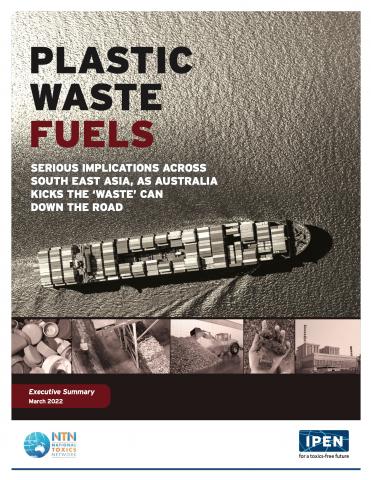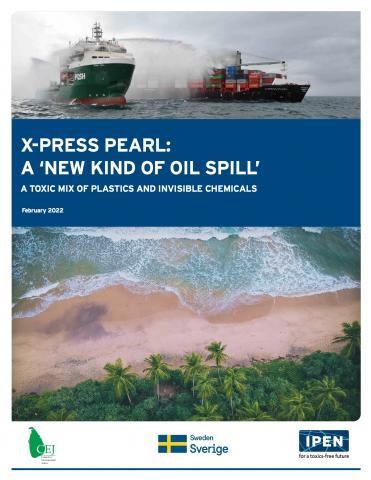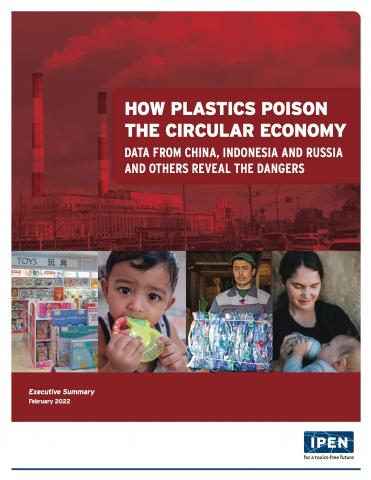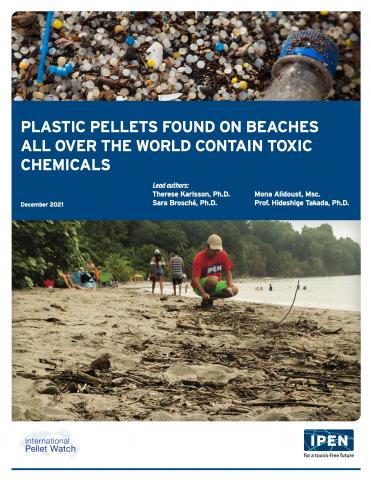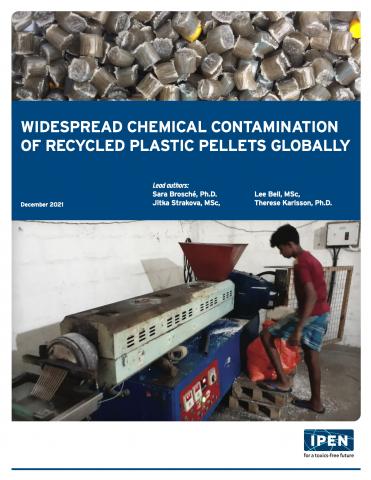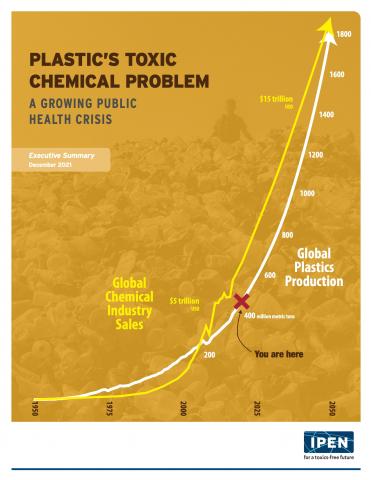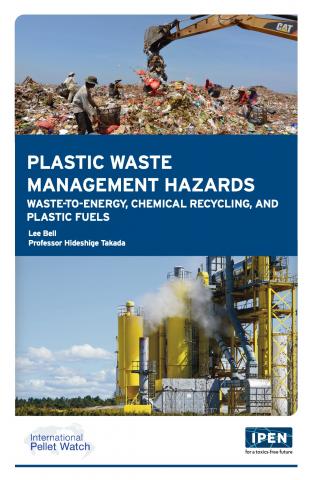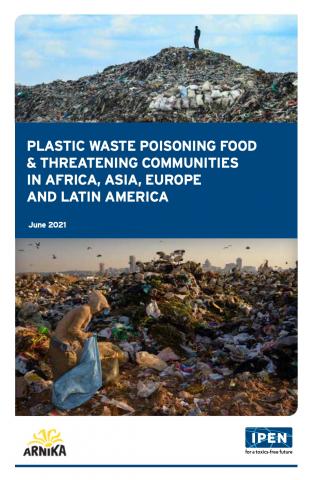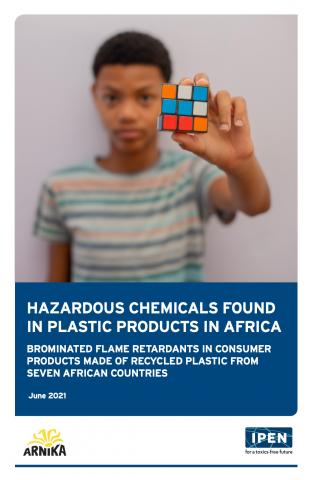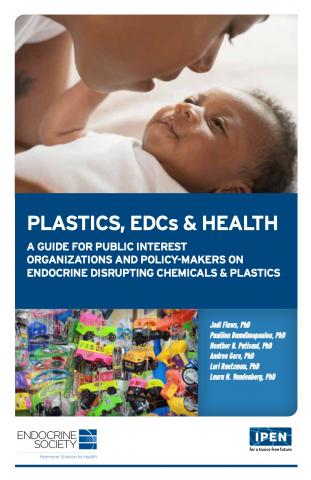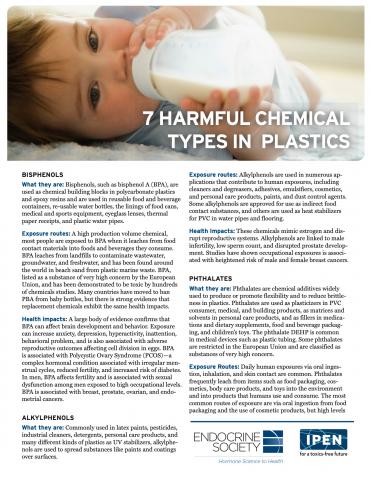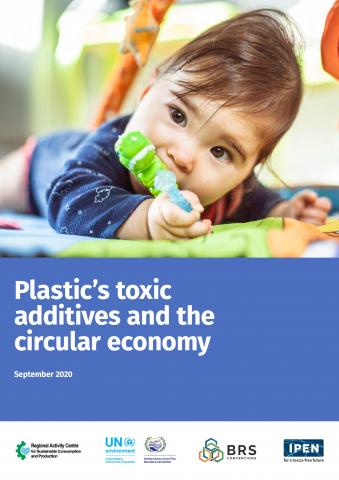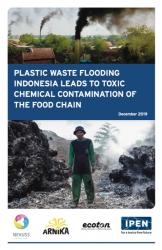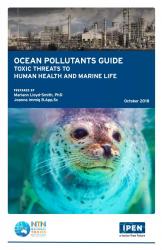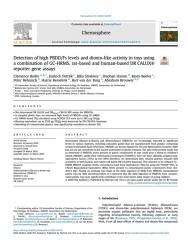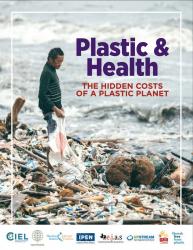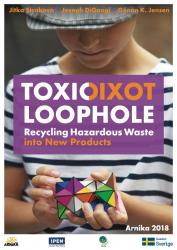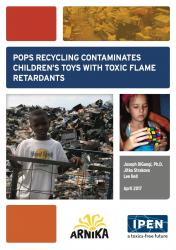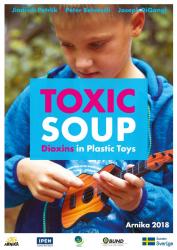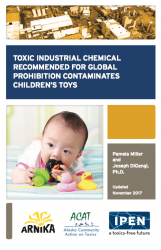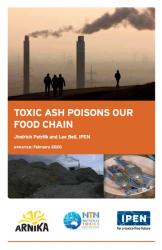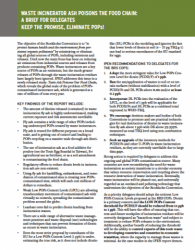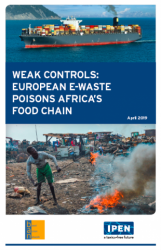Reports for Plastics Treaty INC1
IPEN has been studying the impacts of plastics and the chemicals they contain for many years. The reports below are a sampling of that work.
Plastic Waste Fuels
IPEN studies show how policy is driving massive investment in plastic waste-to-fuel processing, and that exports are threatening waste management in ASEAN countries and undermining the Basel Convention and climate change commitments.
X-Press Pearl: A 'New kind of oil spill'
In May 2021, the cargo ship X-Press Pearl caught fire and sank off the shore Sri Lanka, in the Indian Ocean, creating a complex debris field of chemicals and waste that will have impacts for many years. This study looks at the many ways in which the nearby communicates have been affected, and how prevention, mitigation, and regulatory measures are vital to protect coastal communities and prevent similar disasters in future.
Plastic Poisons the Circular Economy
IPEN published a number of studies showing significant obstacles for countries seeking to implement safe plastic circular economies. The studies reveal that countries are unable to handle large volumes of diverse plastics waste streams safely, and the reality that, without regulations requiring plastic ingredients to be labeled, countries are blindly allowing known toxic chemicals onto their markets in plastic products.
Plastic pellets found on beaches all over the world contain toxic chemicals
Preproduction plastics as pellets, or "nurdles", can carry many different chemicals, both those added to the plastics and pollutants that attach (sorb) to them in the environment. Often lost during production, transportation, and storage, pellets have been found on beaches all over the world since the 1970s. This study of plastic pellets gathered from beaches in 23 different countries contained many chemicals of concern, some in very high concentrations.
Widespread chemical contamination of recycled plastic pellets globally
Because almost all plastics contain toxic chemicals, recycling processes can perserve and can even generate toxic chemicals, such as dioxins. In this study, pellets made from recycled HDPE, intended for use in new products, were purchased from 24 recyclers in 23 countries and analyzed for 18 substances. The large number of toxic chemicals in many of the samples highlights the need to rethink recycling to ensure it does not perpetuate harms.
Plastic’s Toxic Chemical Problem: A Growing public health crisis
This summary of our two plastic pellets reports encapsulate the broad issues related to toxic chemicals in plastics and the concerns with recycling processes that can perserve or generate toxic chemicals.Plastic Waste Management Hazards
Plastic waste has become an unprecedented pollution issue, blanketing our planet in the petrochemical remnants of plastic production. This report examines current and emerging methods by which plastic waste is managed globally and questions whether any of them present a solution to the rapidly accelerating generation of plastic waste. In short, they don't and the only long-term answer is to produce less plastic.
Plastic Waste Poisoning Food and Threatening Communities
Places like the US, EU, or Australia create vast amount of waste, including plastic waste, exporting much of it to countries lacking the resources or infrastructure to manage them safely. This study looked at levels of toxic chemicals samples of eggs in and around places where the waste is often burned openly to obtain metals or as a fuel source. The study found some of the highest levels of certain toxics, such as chlorinated dioxins, ever measured in the environment.
Hazardous Chemicals Found in Plastic Products in Africa
Both the African environment and the human health of Africans suffer from toxic chemicals and imported wastes more than in developed countries. Africa has become the destination of illegal toxic waste exports and, as this study shows, toxic chemicals are also present in toys, kitchen utensils, and other consumer products sold in African markets.
Plastic, EDCs and Health
This joint report of the Endocrine Society and IPEN provides the current best knowledge about the effects of endocrine-disrupting chemicals (EDCs) on human health. It discusses chemicals known to be hazardous to human health yet actively used in plastics, exposures, the problem of microplastics, and the issues surrounding alternative plastics.
7 Harmful Chemical Types in Plastics
Although there are thousands of individual chemicals that can be described as EDCs, they fall into seven broad categories. This brief discusses what each group is, how people can be exposed, and the health impacts.
Plastic’s Toxic Additives and the Circular Economy
Report developed in collaboration with multiple UN convention groups, technical experts, and organizations working to address toxic pollution, discusses the key challenges society faces to eliminate toxic components in the plastics life-cycle, identifies chemicals and sectors of greatest concern, and outlines key approaches for tackling the issues.
Plastic Waste Poisons Indonesia’s Food Chain
Research from IPEN, Nexus3, Arnika, and ECOTON, demonstrates how highly toxic chemicals from plastic waste contaminates free-range chicken eggs in Indonesian communities where plastic waste accumulates. Eggs, collected in the communities where plastic waste is burned to reduce volume and for factory fuel, were found to contain dangerous levels of chemicals posing dire threats to human health including dioxins, flame retardants, and the toxic “forever chemical,” PFOS.
Ocean Pollutants Guide
Up-to-date synthesis of data on toxic chemical ocean pollution, including hazardous pesticides, pharmaceuticals, persistent organic pollutants (POPs) like PCBs, plastics, microplastics, and heavy metals, and exposes their sweeping impacts on marine and human life.Study Proves Toys from Recycled Plastics Threaten Children’s Health
In this peer-reviewed study of toxic chemicals in plastic children’s toys and consumer products, researchers from Arnika, Biodetection Systesm, and IPEN proved that harmful chemicals can move from recycled plastics into human cells. The levels of chemicals revealed in all the samples studied were near those found in hazardous wastes, such as the ash from waste incinerators. These chemicals can significantly contribute to the dioxin daily intake level for children who mouth their toys.Plastic & Health: The Hidden costs of a Plastic Planet
Research, lead by CIEL, exposing the distinct toxic risks plastic poses to human health at every stage of the plastic life-cycle, from extraction of fossil fuels, to consumer use, to disposal and beyond.
Toxic Loopholes: Recycling Hazardous Waste into New Products
Evidence of banned toxic flame-retardants, hazardous chemicals from electronic waste that are known to disrupt thyroid function and cause neurological and attention deficits in children, are recycled into new plastic consumer products across Europe.
POPs Recycling Contaminates Children’s Toys with Toxic Flame Retardants
A study of children’s products from 26 countries revealed that toxic flame-retardant chemicals in recycled electronic waste results in pervasive contamination of new plastic children’s toys and related products. Recycling materials that contain persistent organic pollutants (POPs) and other toxic substances contaminates new products, creates human and environmental exposure, and undermines the credibility of recycling.
Toxics Soup: Dioxins in Plastic Toys
Highly toxic brominated dioxins found in toys and accessories sampled in seven countries that were made from recycled e-waste plastic reveals levels of dioxin found in previous studies in waste incineration fly ash or other industrial waste.
Toxic Industrial Chemical Recommended for Global Prohibition Contaminates Children’s Toys
The toxic industrial chemical Short-chain chlorinated paraffins (SCCPs) are primarily used in metalworking, but also used in plastic products as flame retardants and softeners. A survey of children’s products in 10 countries reveals widespread contamination with SCCPs.
Toxic Ash Poisons Our Food Chain
Report on the toxic threats from waste incinerator ash that, which is generated at a rate of millions of tons every year includes analysis of global scale of toxic ash and other residues from waste incineration contain dioxins, furans (PCDD/Fs) and a range of other highly toxic POPs at levels which are a threat to human health and the environment.
Waste Incinerator Ash Poisons the Food Chain: A Brief for Delegates
Abbreviated brief summarizes findings of the Toxic Ash Poisons Our Food Chain report.
Weak Controls: European E-waste Poisons Africa’s Food Chain
Research from IPEN and BAN reveals dire human exposure and food chain contamination from highly toxic plastics in waste in Ghana, including toxic recycled e-waste shipped from Europe.

